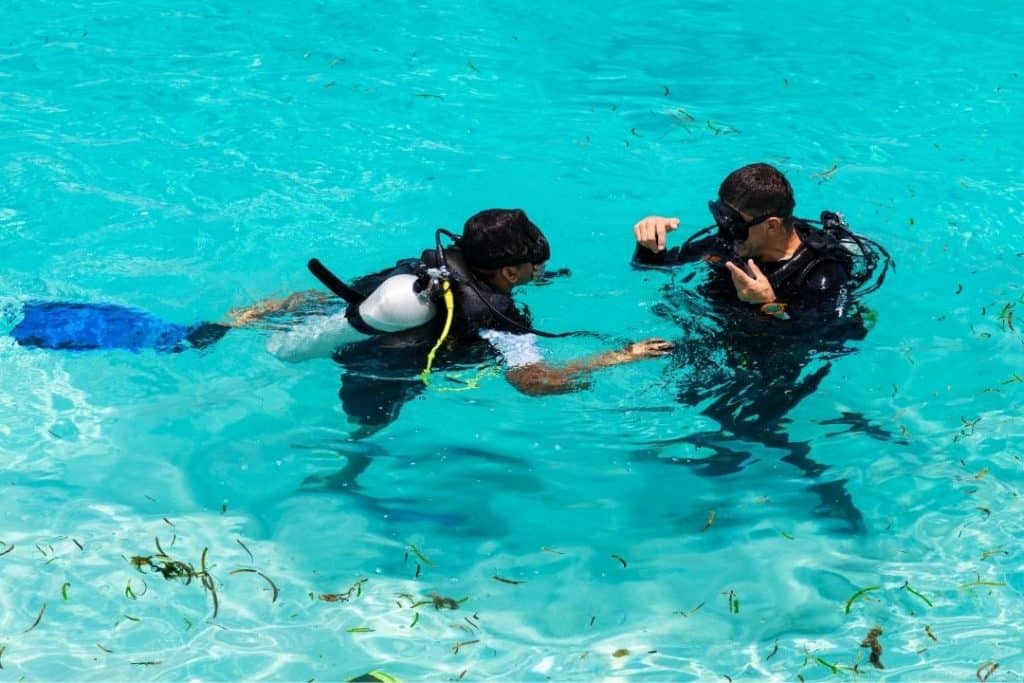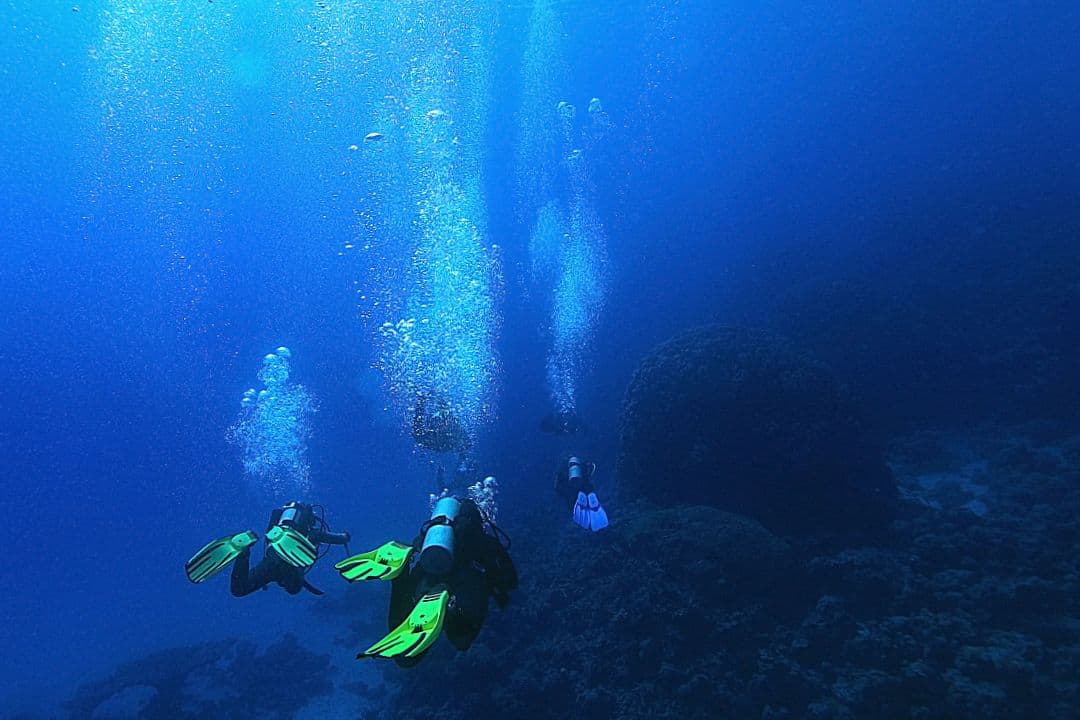PADI (Professional Association of Diving Instructors) and SSI (Scuba Schools International) are both certification agencies that can be found in countries around the world.
Among over 50 other agencies, PADI and SSI continually rise to the top as the most recognized.
Is PADI better than SSI?
Both PADI and SSI certifications are accepted internationally, as they each follow the skill guidelines of the World Recreational Scuba Training Council (WRSTC). However, there are some major differences between the two agencies that will be discussed below. Each diver must weigh the pros and cons of each, considering the different philosophies before making the final decision of which course to take.
3 main differences between PADI and SSI
Founding Philosophies

PADI and SSI each approach the introduction to the world of scuba diving in different ways. PADI’s slogan, “The Way the World Learns to Dive,” epitomizes their philosophy: PADI’s aim is to be ubiquitous and invite everyone into the world of recreational scuba.
PADI was created to break recreational scuba diving down into a modular structure, so that instructors and students could easily follow the certification curriculum in exact steps.
Historically, it was difficult for divers to get into scuba recreationally, and PADI was formed to combat this.
Each course is broken down into skill checklists, and each skill on the checklist has exact requirements for an instructor to pass a student on that skill. PADI has become the most dominant certification agency in the world because of its business-like approach to scuba diving as a sport, and has only continued to grow.
SSI was created by passionate divers who aimed to make scuba diving accessible to anyone, as opposed to everyone.
This is a nuanced difference, but a significant one — while PADI views certifying as many students as possible as the best way to foster stewardship of the ocean and requires strict adherence to their modules to succeed, SSI strives to make the certification process malleable to fit the learning curve of any student.
This method recognizes that some students may need a different approach to learning scuba, and allows for instructors to adjust their teaching to fit a student’s needs.
SSI’s philosophy has always been focused on the student and dive center experience over mass agency growth, but in recent years has begun to expand majorly, updating its online technology and agency structure to allow for more international growth.
Certification Costs

For any scuba certification from any agency at any course level, the cost of certification should include course materials, certification fees, instruction/facility fees, and gear fees.
In general, SSI courses will cost less than PADI courses because it costs dive centers more to offer PADI courses than SSI (PADI is more of a “brand name” agency, so dive centers both pay more and charge more to represent the PADI brand).
Course materials can be available online or as a book, depending on the dive center you’re working with and personal preference. Generally, online courses cost more if they are not already included in the cost of the course package a dive center is offering for the certification.
Certification fees are what the dive center or instructor is charged by the agency to process your certification, and are usually included in the cost of materials or the course package.
Material cost and certification fees will be determined by the certifying agency, so these costs should not vary between dive centers.
You can check the price of material costs on PADI and SSI (or any other agency) websites, although most dive centers will include the cost of materials in the certification course package, saving you money over purchasing them separately.
Instruction and facility fees will vary depending on a dive center’s location, as this will include pool use fees, instructor salary rates, boat charter or ticket fees, and dive center operational fees.
Along these same lines, gear fees will vary greatly depending on the location of your course certification. At resorts, most gear needed for a course will be included as a rental, either as part of your course or as an additional flat fee.
In locations that are less vacation-oriented, you will likely be required to purchase the basic gear, and the main scuba gear items (like tank, weights, regulator, and BCD), will be included in the course as a rental.
Education Style

PADI regulations are known to be strict and linear. Skills are taught in a specific order in a specific way, and it is considered against regulation for an instructor to take liberties with this structure.
A student must pass the skills in the proper order, and will be required to redo skills they are unable to pass before moving onto the next ones.
While this could imply that some students will need to be moved to private instruction if they can’t pass the skills at the pace of the rest of the class, it ensures that every PADI instructor is teaching skills in the same manner, which can give a student confidence that they are learning everything properly and according to PADI standards.
Alternatively, SSI allows instructors to teach skills more flexibly as long as specific requirements are met before the certification is completed.
This means that it may be easier for an instructor to keep a student in a group class even if they are falling behind on passing skills, allowing them to complete the skills at the end of the course once they are more comfortable with the basics of diving, or skipping a skill a student is having issues with and coming back to it after they’ve passed other skills.
This method may take the pressure off for those students that take a bit longer to gain the confidence to pass skills, but it could also make room for certain instructors to be too lax on enforcing certain requirements if a student is struggling.
Conclusion
Overall, there is no real difference between PADI and SSI as far as the legitimacy of their certifications.
A diver could get PADI Open Water certified (1st course) and SSI Advanced Adventure diver certified (2nd course), and both certifications would be accepted worldwide.
The main differences come into play when agency history and philosophy are considered. PADI is more likely accessible at any location, while SSI may feel more comfortable for the hesitant student.
However, when making a choice for where to get certified, the agency should be the least of a student’s considerations.
The reputation of the dive center and its instructors, along with the cost of the course and the course location, should be in line with the comfort and learning style of the student considering certification — those qualities will ensure a great scuba experience more than picking PADI or SSI will.
A student’s scuba diving experience will always be dependent on multiple factors, and the certification agency is only one small portion of that experience.
Leave a note in the comment section if you have any questions or experiences you’d like to share!


